Perhaps the most worrisome part of any race is the start. Every driver is accelerating and jockeying for advantage while pushing into the first turn with the entire field.
For the July 27th Tooele Storage Sunchaser 6-hour Enduro, the pace car cleared the UMC Outer Course and 28 racers got the green flag at the starting line. The field launched together with few surprises and dove into turn one relatively close to each other. Mostly what happened at that point was…nothing noteworthy.
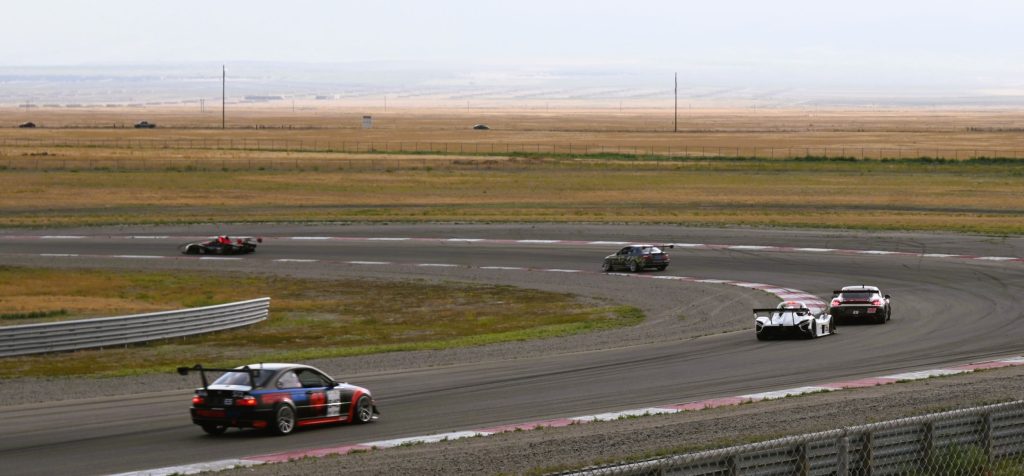
For the next couple of hours, as I moved all around the track, I mostly saw lots of good, clean racing. Perhaps the biggest exception was a car dipping a couple of tires into the edge gravel.
Teams from all over the West, and from as far away as Texas and Virginia, demonstrated some fantastic Utah auto racing. And Utah teams held their own quite well.
Still, in a six-hour race plenty can happen, and it did. Especially as it started getting dark.
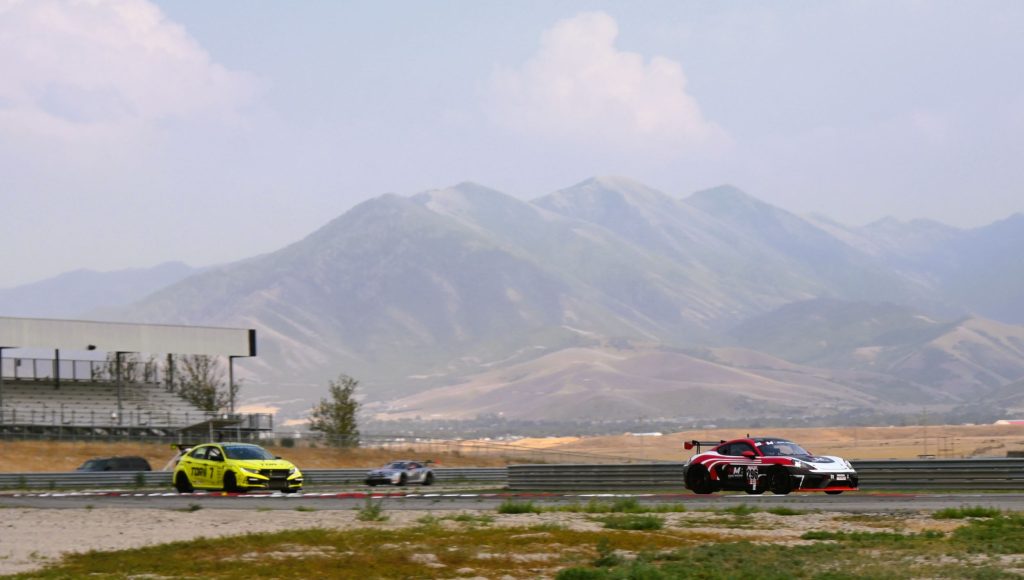
The Tooele Storage Sunchaser 6-Hour Enduro
Where a typical National Auto Sports Association (NASA) race is up to 30 minutes, the Sunchaser—a premier Utah motorsport event—is twelve times longer. It’s harder on drivetrains and on consumables like tires and brakes. You can actually see brakes glowing red, when it gets dark, on the faster cars.
Since the race runs from 6:00 pm to midnight, summer temperatures are dropping. That’s mostly good for drivers, cars, and of course Utah car enthusiasts. On July 27th, significant cloud cover to the west created a lot of shade and a sunset that lasted for a long time.
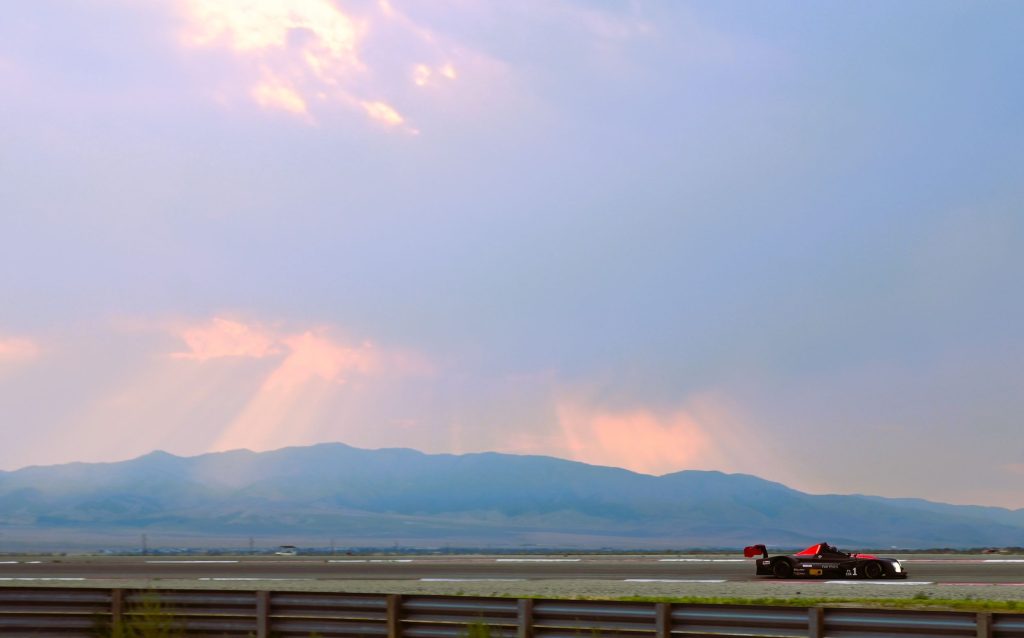
The downside is that, as it gets dark, drivers have a harder time looking through the current turn to the next one. Looking down the track facilitates smoother and faster driving, but isn’t as do-able in the dark. Even bright LEDs only illuminate so much track and don’t point around turns. Driving near the limit is tiring and doing so for hours, especially with limited visibility, is exhausting.
Thus the term “enduro.” It’s not about getting to the finish line first as much as it is about enduring—keeping the car together and moving fast—for as many laps as possible.
Sunchaser Action (Video by Ned Media)
Team Strategies
I spoke with David Muskovitz, who was on track during the transition to darkness and was racing in the dark for the first time. He described losing 10 seconds off lap times at night, and then gradually reducing those times as he adjusted to driving by knowledge of the track.
Thus, one strategy teams have to consider is the number and sequence of drivers. Having more spreads out the exhaustion, but time in the pits swapping drivers is time not clicking off laps. The rules do allow for driver changes while refueling, so refueling strategy interacts with relief strategy.
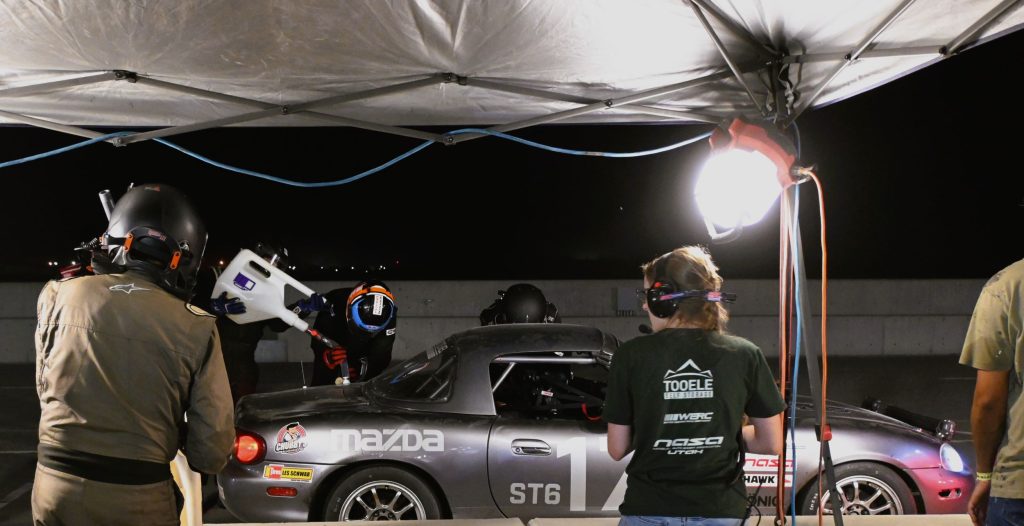
Some teams had as many as five drivers. Conversely, Team DILLIGAF ran with lone driver Taylor Dahl. His #70 Spec Miata retired early so Taylor, who had excellent lap times, was not tested for the full six hours.
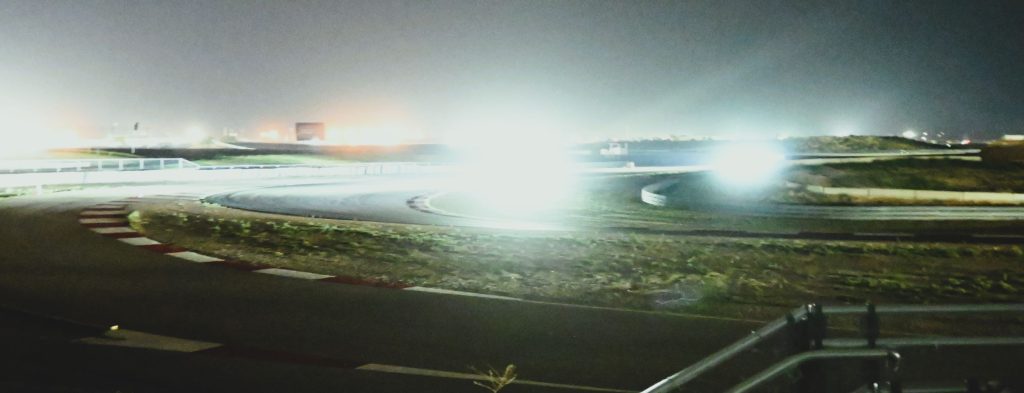
Another important team strategy involves tires. Stickier tires mean harder cornering with faster lap times, but they also wear faster. Higher treadwear tires last longer, but aren’t quite as fast. Meanwhile, tire changes take time away from completing laps.
So when a team opts for a sticker, lower treadwear tire, they are either planning a tire change or gambling that the tires will last six hours. When that gamble fails, as it sometimes did that Saturday evening, a car has to spend additional time in the pits, and may even have to limp in slowly on a corded or flat tire.
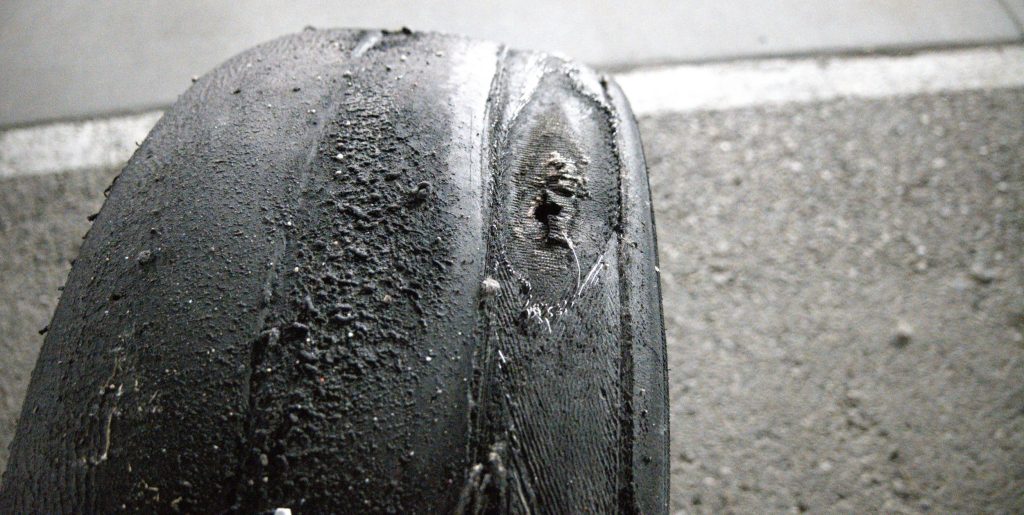
Attrition
Of the 28 starters across eight racing classes, only 17 stayed out for the whole six hours. Components often break when pushed hard for so long, and drivers do push hard.
Sometimes a fix was quick and simple. Team Sigier’s KTM GTX had a rear diffuser—a rear aero component—dangling on one side. A few zip ties held it in place for the rest of the evening.
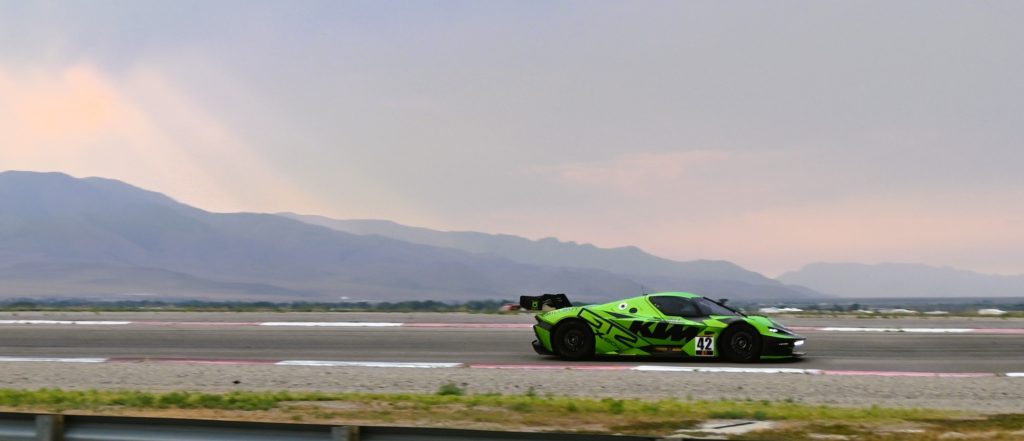
At the other end of the spectrum, Next Level Racing’s modified Mazda Miata experienced a couple of on-track glitches, including a spin-out, and then it didn’t want to start or run smoothly. Initial troubleshooting pointed to possible compression problems and major engine work. After a few attempts to get #17 back on track, it was clearly done for the night.
Other cars, including Axboe Racing’s Radical SR3 and Team DILLIGAF’s Mazda Miata, retired early with suspension component failures. Again, endurance racing is hard on cars.
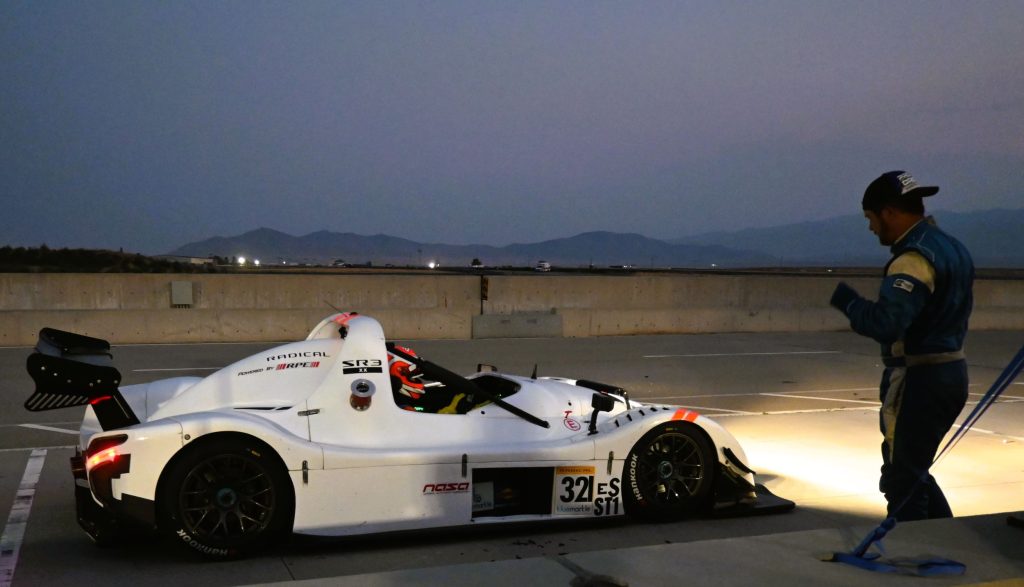
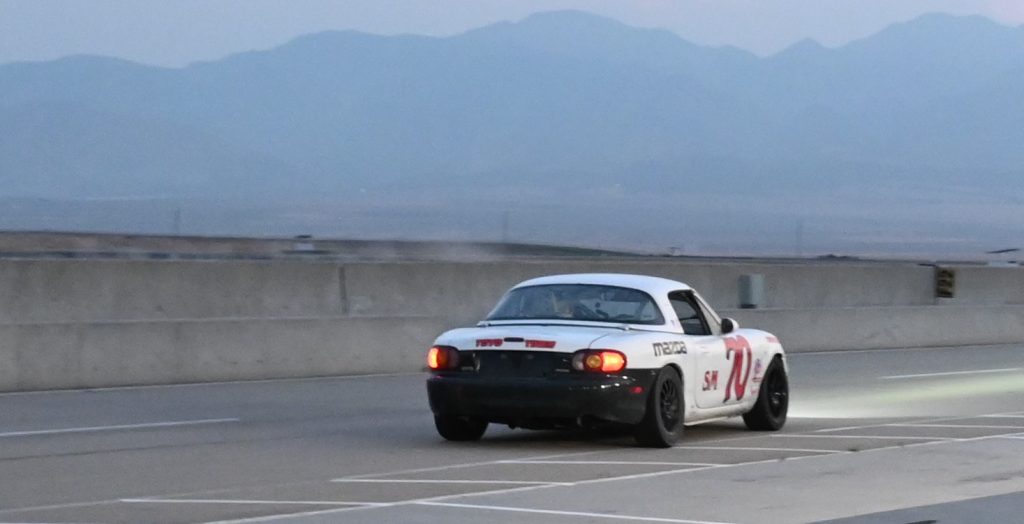
Race Delays
Component failures and possible driver errors brought out the yellow caution flag multiple times, sometimes for long periods. That flag requires drivers to slow for unsafe conditions, at least on affected areas of the track, and prohibits passing other cars. Laps completed under yellow still count.
If ground crews need to assist or remove a car from the track, the yellow normally comes out for their protection. Cars needed towing for things like running out of gas or mechanical failure. In one case two disabled cars needed the same piece of equipment to get them off track. That led to a protracted yellow as one car had to be removed before the other could be assisted.

Three different times during the night, the on-track situation was concerning enough that the pace car, which cannot be passed, came out to force the pack to slow down. One of those was a relatively severe contact incident that took a long time to clean up.
Apparently Turn One Automotive’s #82 Ligier JS2R started to spin out near the bottom of the “Attitudes” series of turns. The driver isn’t sure whether the car was tapped, experienced a malfunction, or what, since the car had been handling the chicane fine to that point. What is certain is that Singler Racing’s #3 BMW M4, which was pushing hard behind #82—completely normal during a race—made contact during the spin.
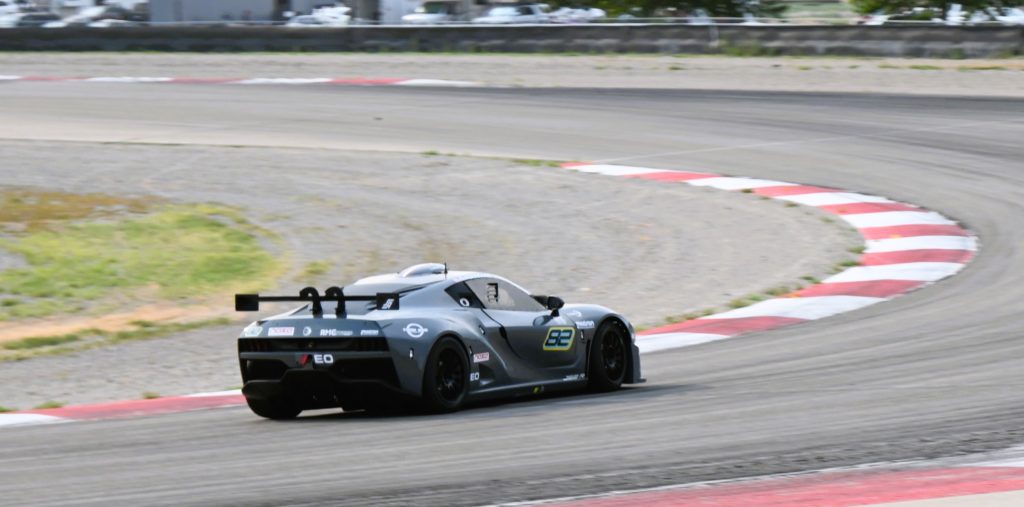
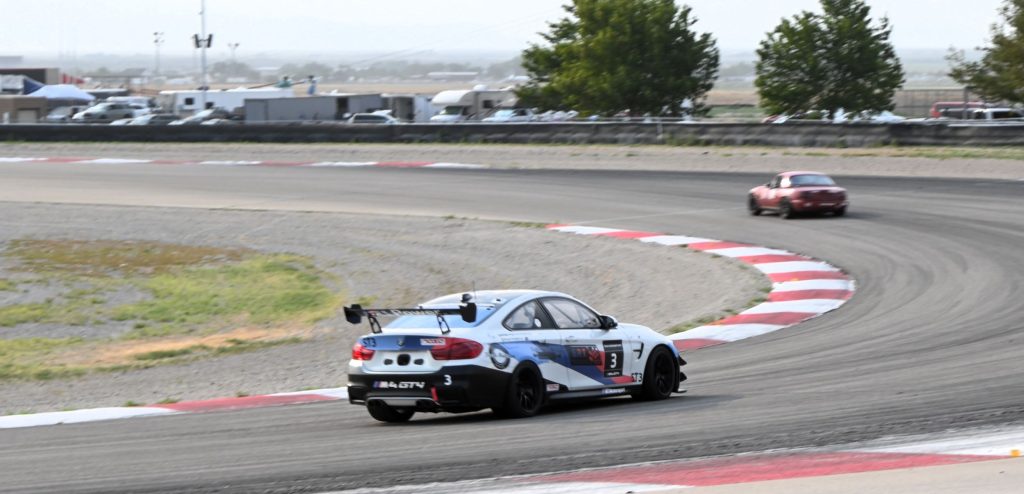
Both cars were out of the race. Fortunately, the drivers were fine and both vehicles should be repairable. Since they were the only remaining E0-class competitors—Team X Factor’s E0 entry had retired eight minutes earlier—they even managed to win the top two positions in that class.
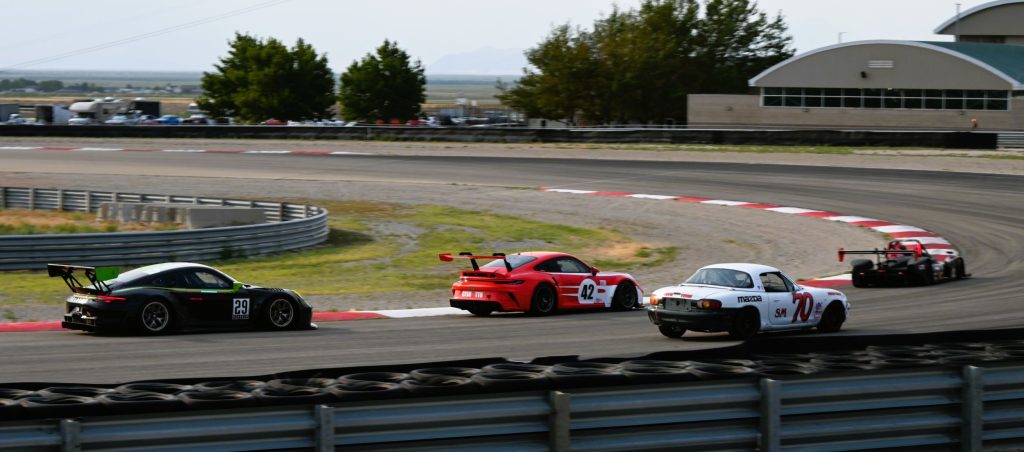
Race Classes
NASA’s Western Endurance Racing Championship (WERC) series has eight classes from the slowest E3 and E3S (essentially Spec Miata) through increasingly faster E2, E1, and E0. These classes are based primarily on power-to-weight ratios, rather than demonstrated speed. Still, ES cars should be even faster, and ESR and GT classes are the unlimited entries. GTs must be based on production cars while ESRs can be prototypes or sport racers.
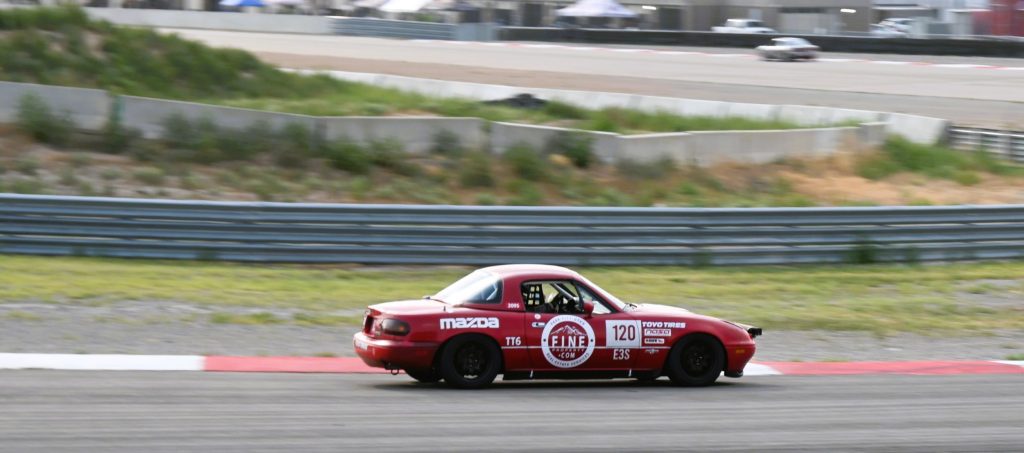
Results
Three E3S Miatas held on for the entire race, with Team 12 Speed Shop’s #120 taking 1st with 140 laps. The battle for 2nd was close with The Perfect Storm’s #92 edging out Team FG Sport by a single lap. All are Utah-region teams.
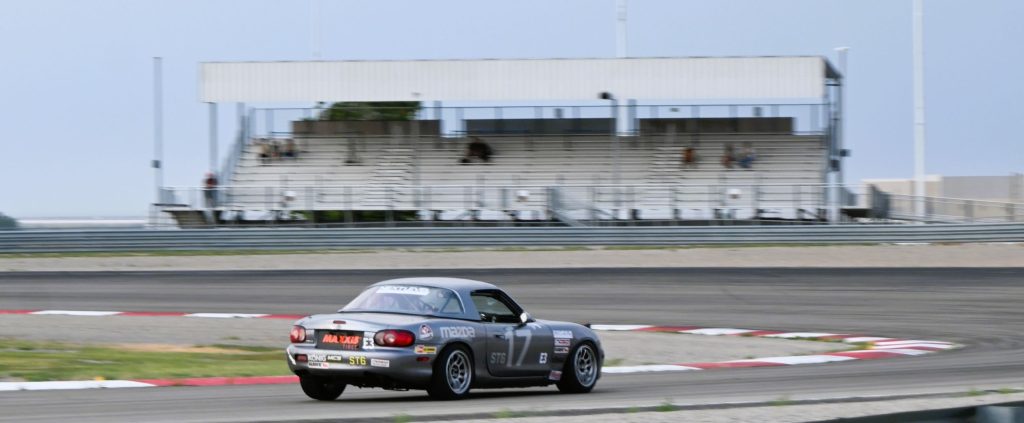
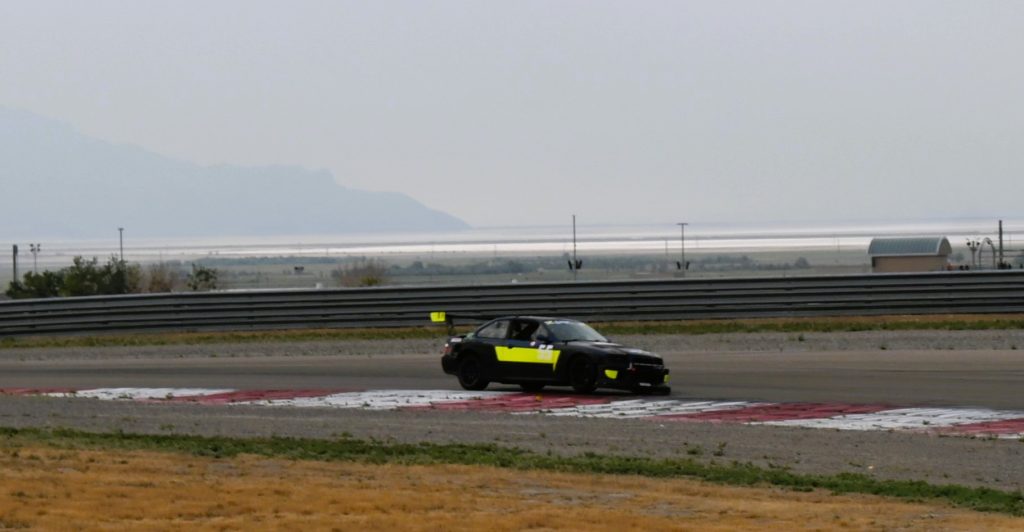
Utah’s Next Level Racing, with the #17 Miata, won the E3 class. In E2, Utah’s Team MRG Sports’ #558 BMW 330 pulled out the win over two California-based teams that also managed to hang on for the whole six hours.
California’s Team Tazzio Ottis dominated the E1 class. Their #7 Honda Civic Type R functioned superbly and completed 142 laps. They beat out three other competitors that managed to go the distance, albeit less distance.
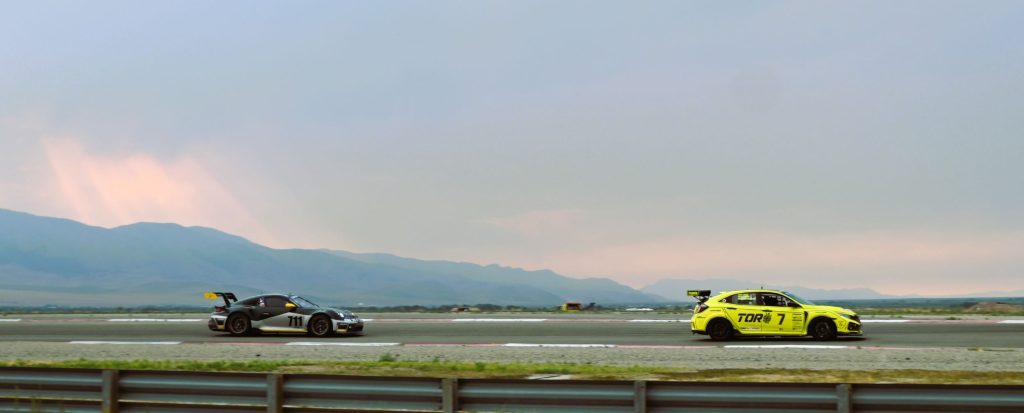
California’s Team Singler Racing’s #3 BMW M4, with some Utah drivers, won the E0 class. They completed one more lap than Texas-based Team Turn One Automotive’s #82 Ligier JS2R.
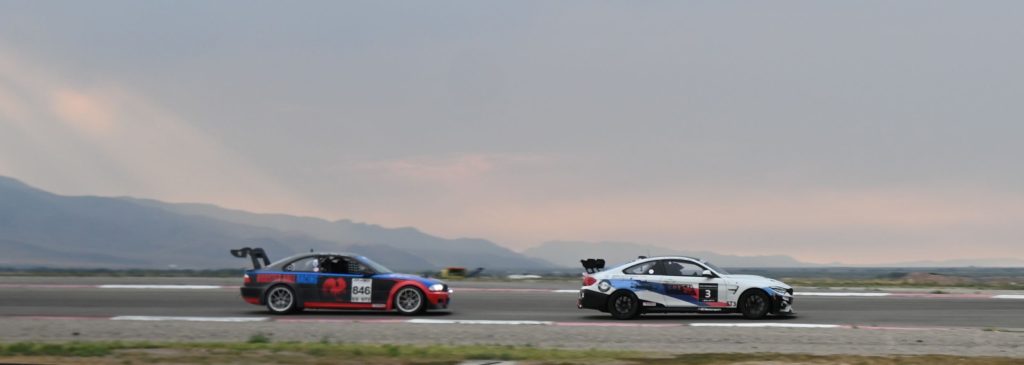
In the ES class, Rooster Hall Racing won comfortably in a highly-modified BMW 330ci. That outcome made it worth having come all the way from Virginia. Utah’s HM Road Racing Development also endured the entire race and took 2nd in the #296 Porsche 718 Clubsport.
In ESRs, two California-based teams dueled for 1st place, both fielding Norma M20FCs. By the end of the night, Team Norma’s Last Chance had covered 165 laps. That’s just one more than Lang Development Racing’s 164 laps. Still, after battling electrical problems and retiring early last year, the Lang team had a successful 2024 Sunchaser.
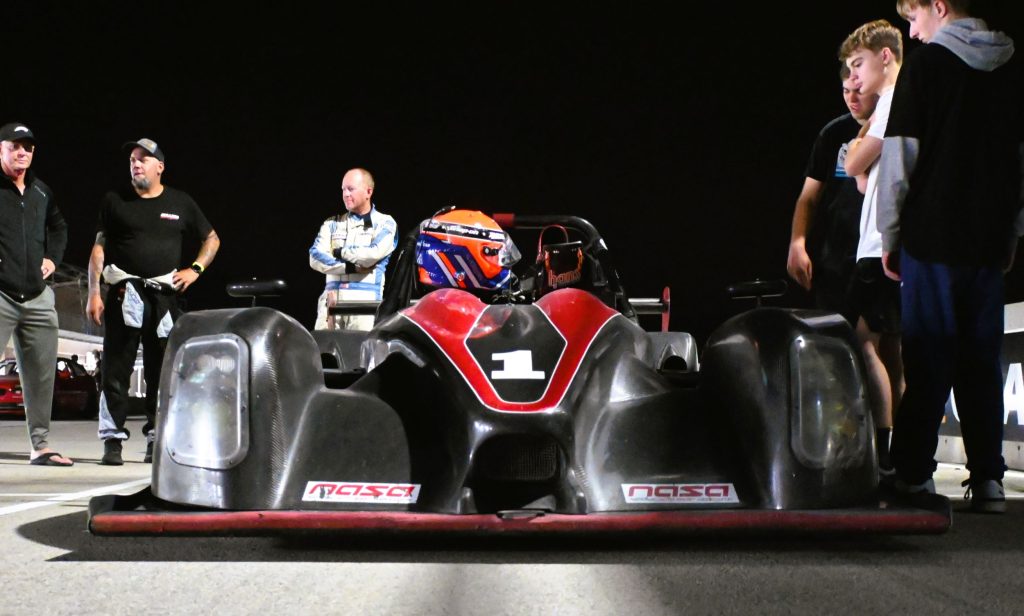
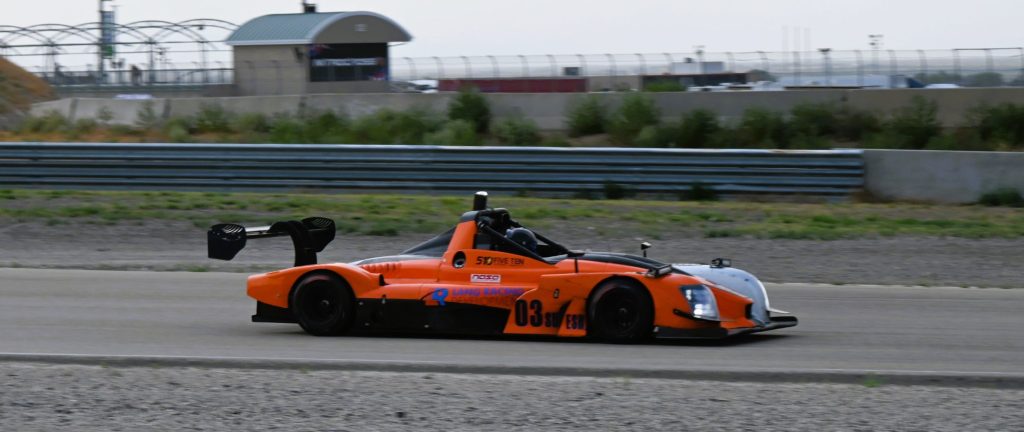
Finally, Utah’s Air Power Racing dominated the GT class in the #711 Porsche 992 GT3 Cup. Their 167 laps was seven more than the next GT car, TruSpeed Autosport’s Porsche 911 GT# Cup car. Both Utah teams finished ahead of the 3rd place KTM GTX field by California’s Sigier Motorsports.
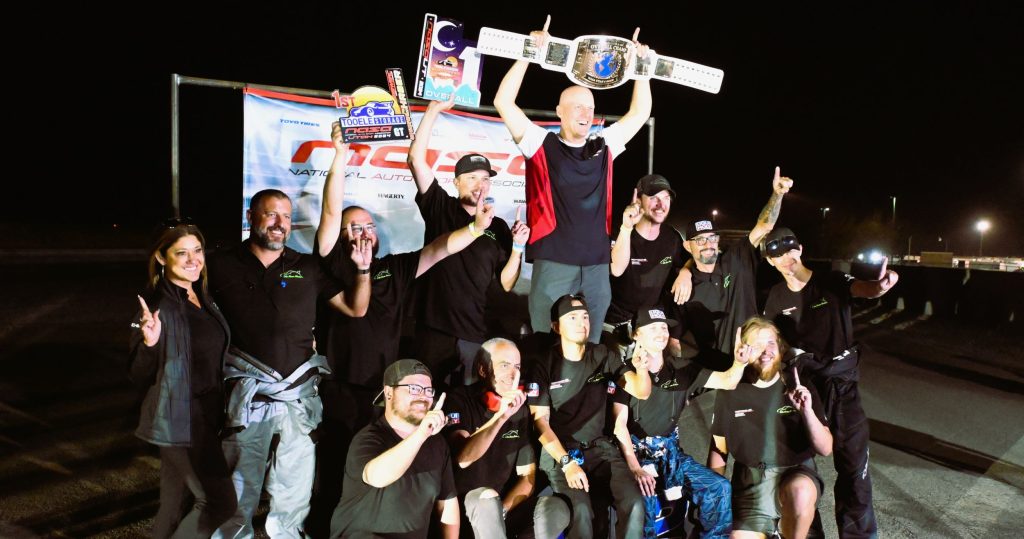
Overall
Air Power Racing’s 167-lap night was not only good enough for the GT win, but they should also be congratulated for the overall win! The two ESR competitors described above were 2nd and 3rd overall.
There were a couple of appeals at the end of the race, regarding two-lap penalties assessed against two teams for passing under a yellow flag. Both teams provided in-car video evidence that negated those penalties. That outcome didn’t change the finishing order but did change the number of laps awarded.
NASA Utah, WERC Race Director Sean Meze, UMC, and Tooele Storage ensured a fantastic Utah auto event. I’m already looking forward to next year’s Sunchaser.
© 2024, R Bairett

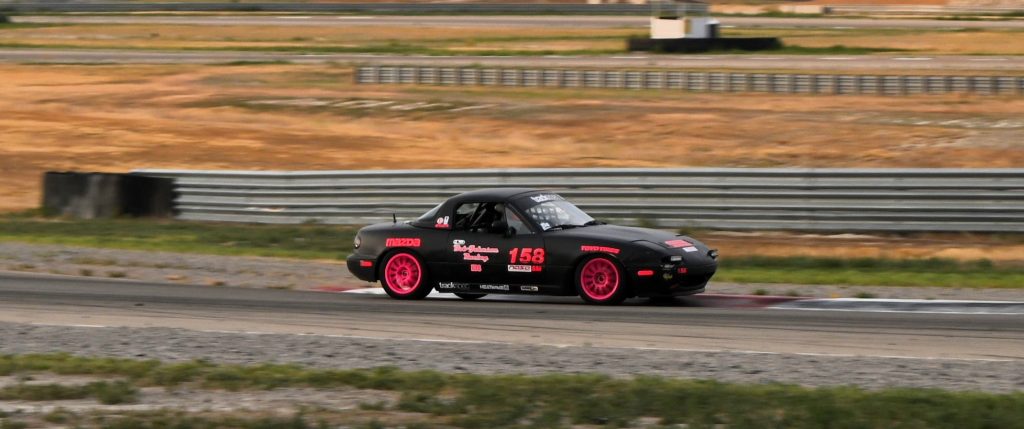
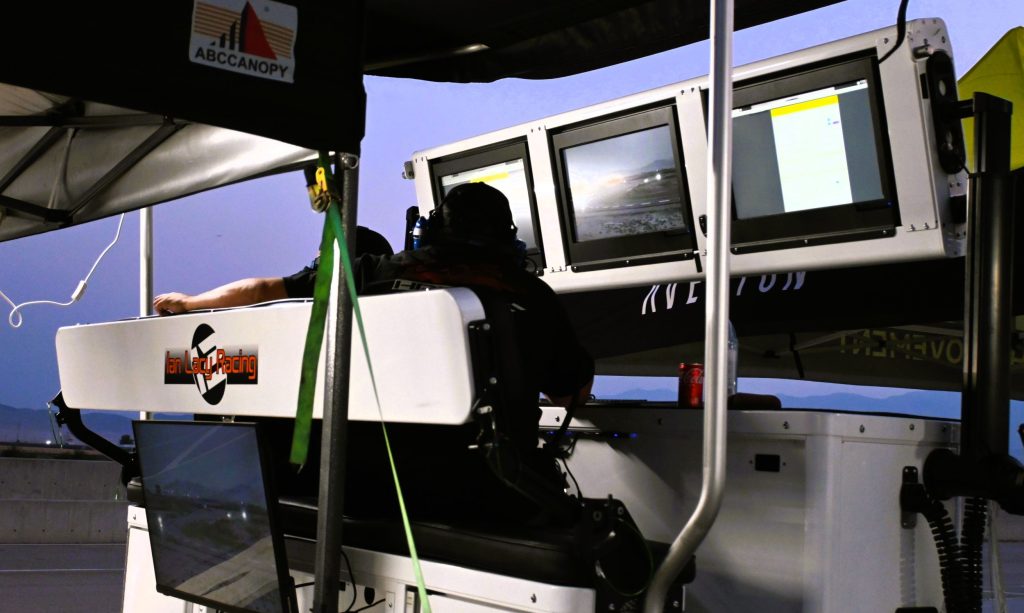
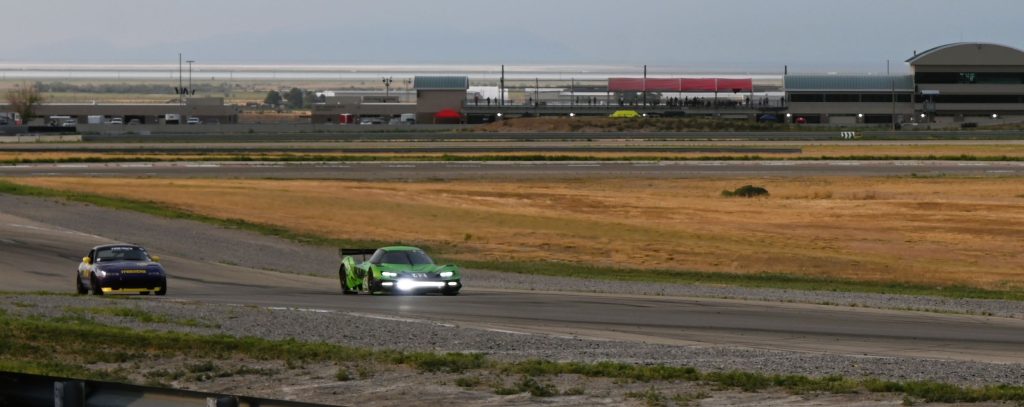

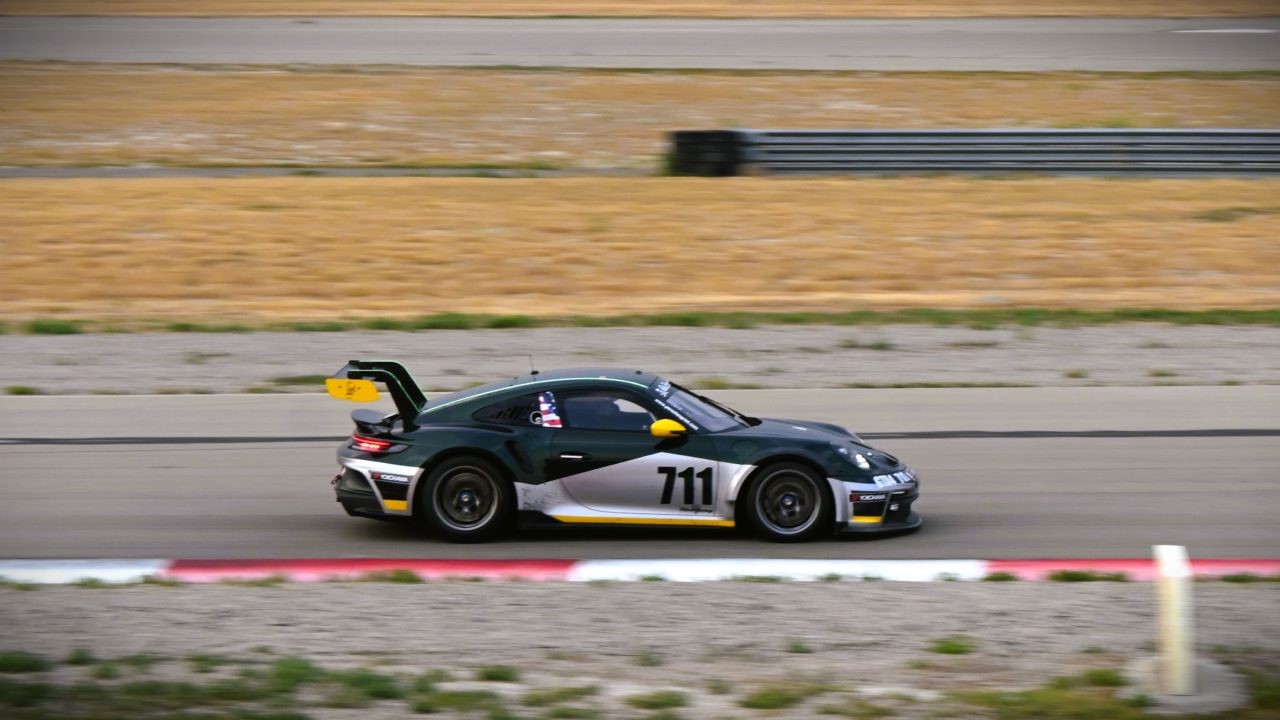



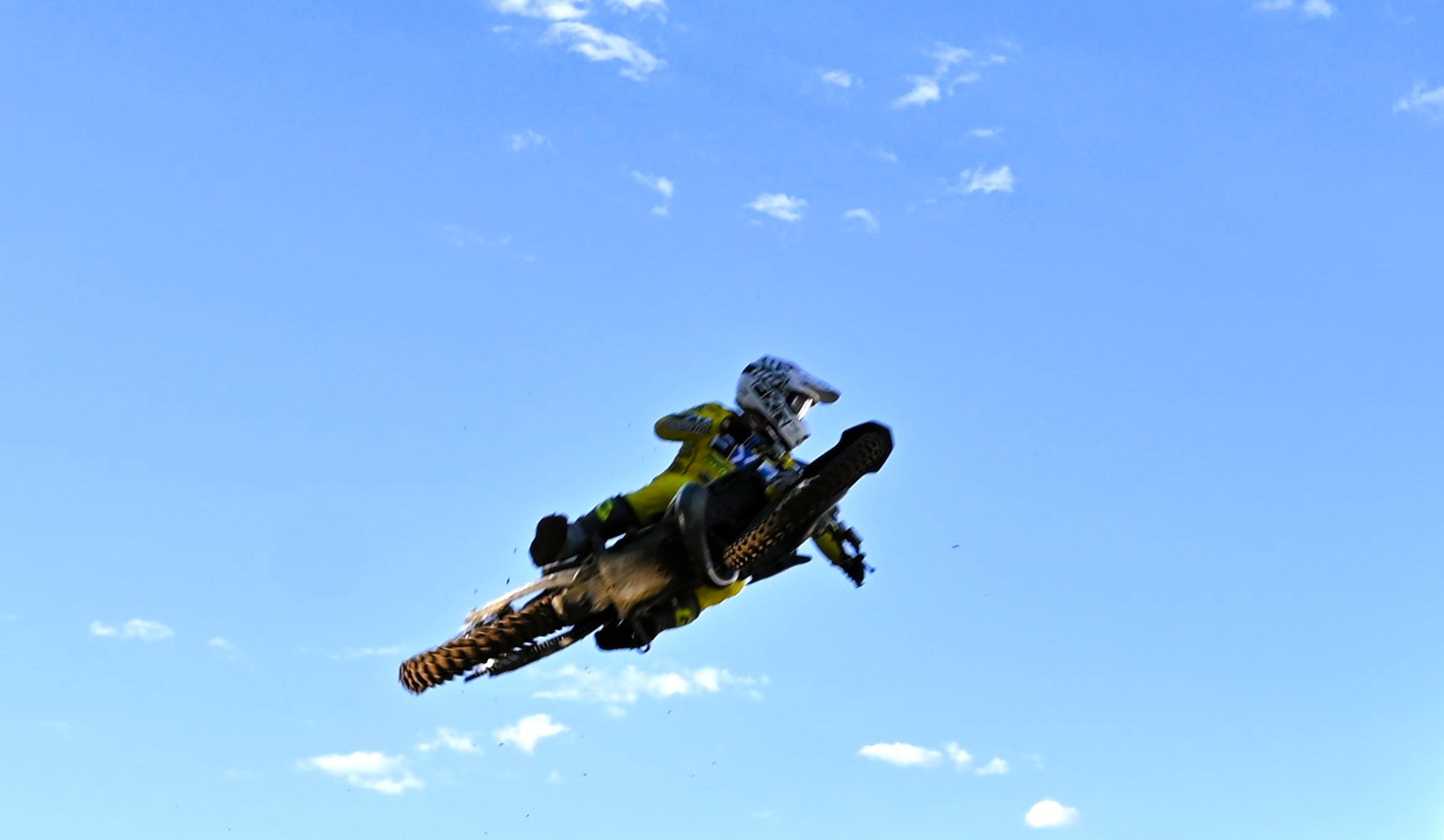
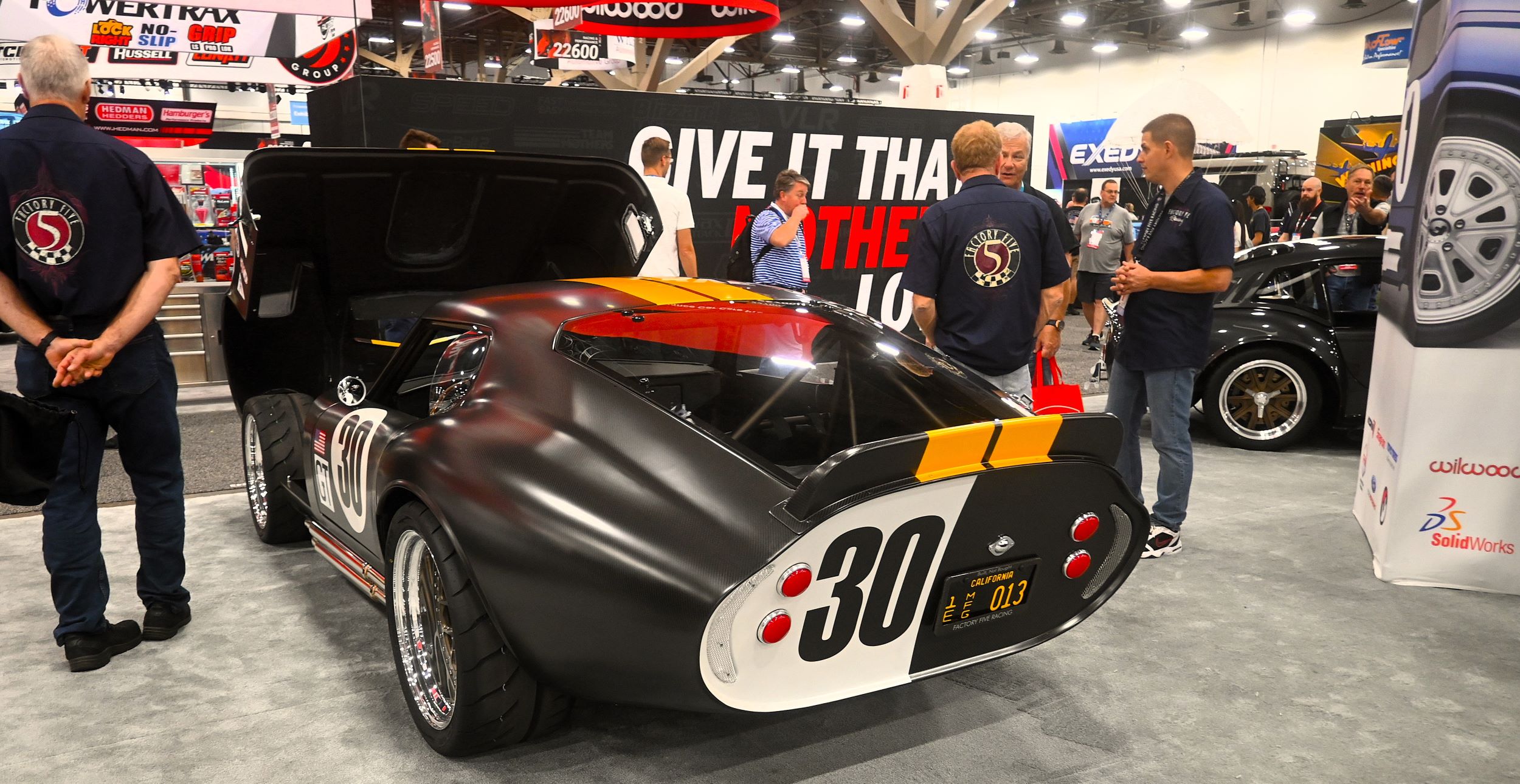
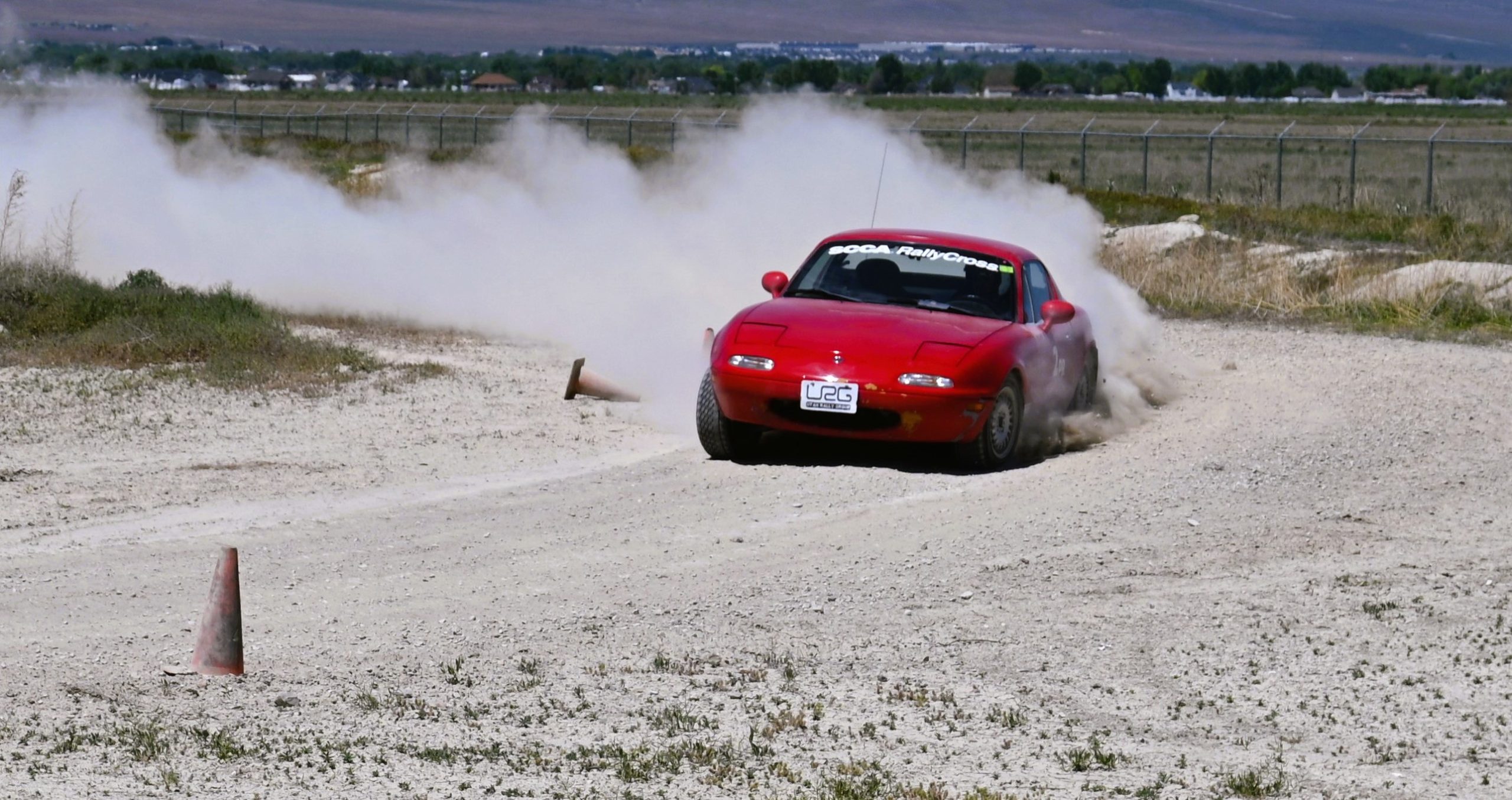
0 Comments